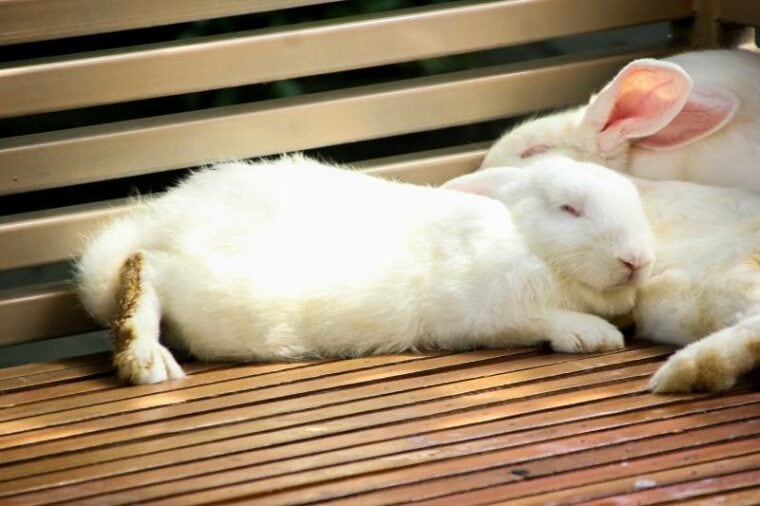
Click Below to Skip Ahead
Rabbits need about 8–12 hours of good sleep a day. If your rabbit doesn’t get enough sleep, they could become sick and end up at the vet, and you have to observe your pet’s sleeping habits and behavior to ensure they’re okay. However, since rabbits can sleep with their eyes open, it’s sometimes hard to tell.
In this article, we’ll give you a few surefire signs that your bunny is sleeping, and much more, so join us.
The 5 Signs a Rabbit Is Sleeping
1. Relaxed Body and Ears
One of the best ways to tell that your rabbit is sleeping is by reading their body language. Rabbit’s ears are among the strongest survival tools in their arsenal when living in the wild. If your rabbit’s body and ears are relaxed, it’s a pretty safe bet that the rabbit is sleeping. If their ears are standing straight up, it indicates that the rabbit is awake and alert. We’ll talk more about the relaxed body positions of a sleeping rabbit later on in our guide.

2. Nose Isn’t Twitching
We are sure that you’ve noticed your rabbit’s nose constantly twitching. It’s one of the cutest behaviors they exhibit, in our opinion. In fact, the more alert your rabbit is, the more its nose will twitch. A lack of nose twitching is a sign that the rabbit is secure in its hutch and comfortable enough to sleep.
Rabbits in the wild are constantly on alert for danger, and their noses twitch so they can always smell for scents around them. The fact that your rabbit’s nose isn’t twitching is a good sign that the rabbit is comfortable and asleep.
3. Snoring
Who would have thought that a rabbit could snore? Of course, not all rabbits snore, but quite a few do. Their snoring resembles a rasping noise or a soft grunting. At this point, it’s important to note that rabbits are obligate nasal breathers (they only breathe through their nose), therefore, the sound can also indicate an obstruction, dental issues, or respiratory issues (including infections).
If you observe any of these signs, you should have your rabbit examined by your vet. Brachycephalic rabbits are born with a flat, compressed face, and are more likely to snore than their normal-faced counterparts. These rabbits also have a lower tolerance for exercise and warmer temperatures.
If your apparently healthy bunny snores all the time, it’s still best to make an appointment with your vet for a checkup. While it could just be that your rabbit is comfortable, sleeping, and snoring, it’s better to ensure it’s healthy with a thorough examination.
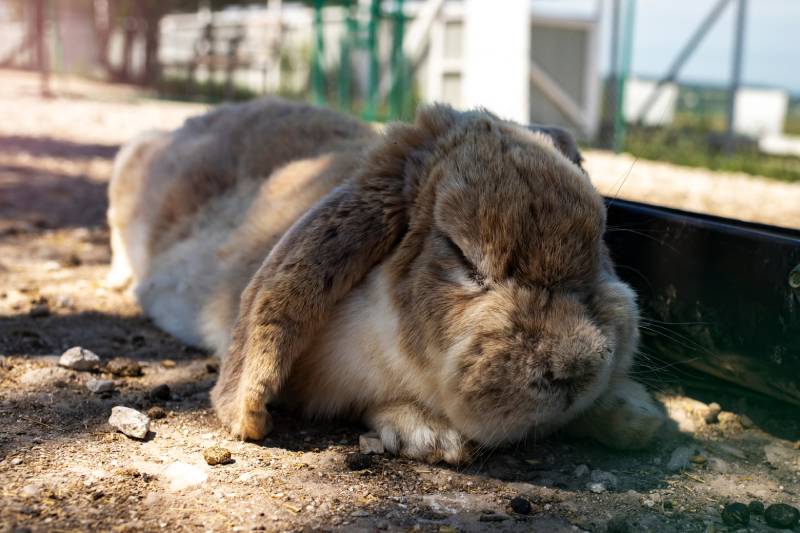
4. Breathing Is Slow
As we stated earlier, rabbits that are comfortably sleeping aren’t worried about predators, which means that you’re providing a stable, safe environment for your furry pet. You can tell if a rabbit is sleeping by taking notice of their breathing.
Rabbits that are awake tend to breathe fast. If a rabbit is asleep, their breathing slows down considerably. Don’t let this scare you if you find your rabbit lying on its side breathing slowly; it’s only comfortable and sleeping soundly.
5. Dreaming
Did you know that rabbits dream? A sign that your rabbit is in a deep sleep is dreaming. During this time, the rabbit might twitch its ears, tail, eyelids, mouth, and legs erratically as if trying to run in its sleep. Like cats and dogs, rabbits make slight movements when they dream, and most pet parents enjoy seeing their pets reacting to their dreams.

Rabbit Sleeping Positions Explained
Now that you know how to tell that your rabbit is sleeping, we’ll talk about a few common positions your pet may display in dreamland.
The Pancake
We alluded to this position earlier. The pancake position is when a rabbit falls onto its stomach and stretches its front and hind legs straight out in front and behind it. This is a sure indication that the rabbit is comfortable in your home and soundly asleep.
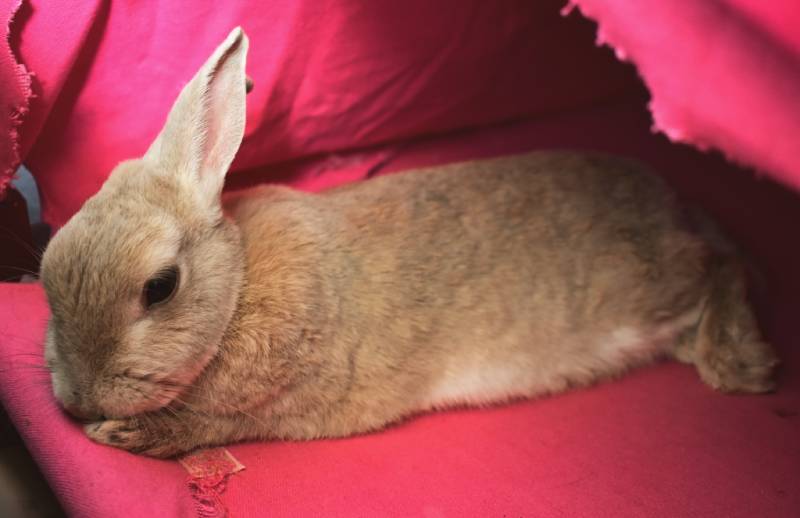
The Loaf
The loaf position is when the rabbit tucks its legs under its body when going to sleep. This position is said to be the first one a rabbit goes into when it’s trying to go to sleep. The pancake and the flop will come after the loaf position.
The Flop
The flop position is reserved for rabbits that feel very comfortable with their surroundings. It is when the rabbit flops over and sleeps on its side. This position has scared many pet parents; with the side sleeping position and the slow breathing, it’s easy to think something is wrong with your pet.
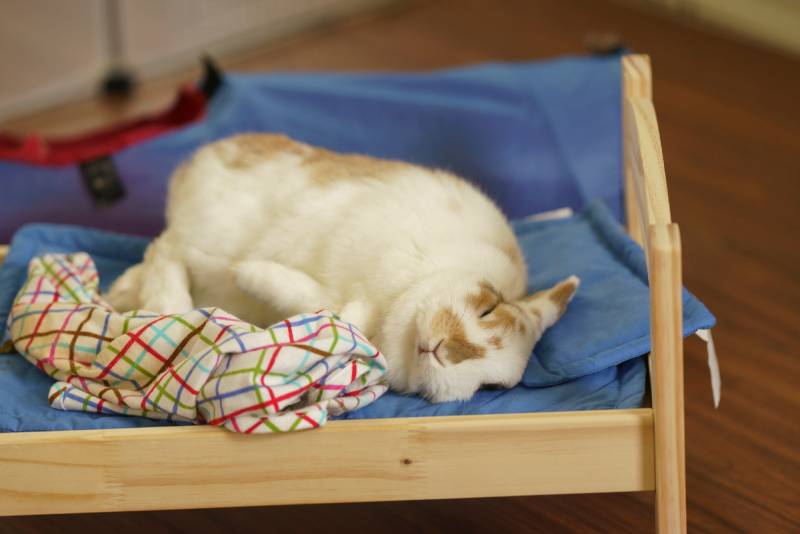
Frequently Asked Questions (FAQ)
Do Rabbits Close Their Eyes When They Sleep?
Did you know that rabbits have a “third eyelid”? Yes, these so-called nictitating membranes are totally clear and serve to keep their eyes moist even when they appear to be fully open.
This evolutionary adaptation means that rabbits can sleep with their eyes open, making them more sensitive to changes in light and movement even when sleeping. This way, they can tell if a predator is approaching—even while they take their afternoon nap!
Only when a rabbit feels extremely comfortable and safe in their environment will they completely close their outer eyelids, as well. If you’ve never seen your bunny napping with their eyes completely closed, this isn’t cause for alarm; even the most well-meaning of owners can frighten their rabbits with noises or sudden movements.
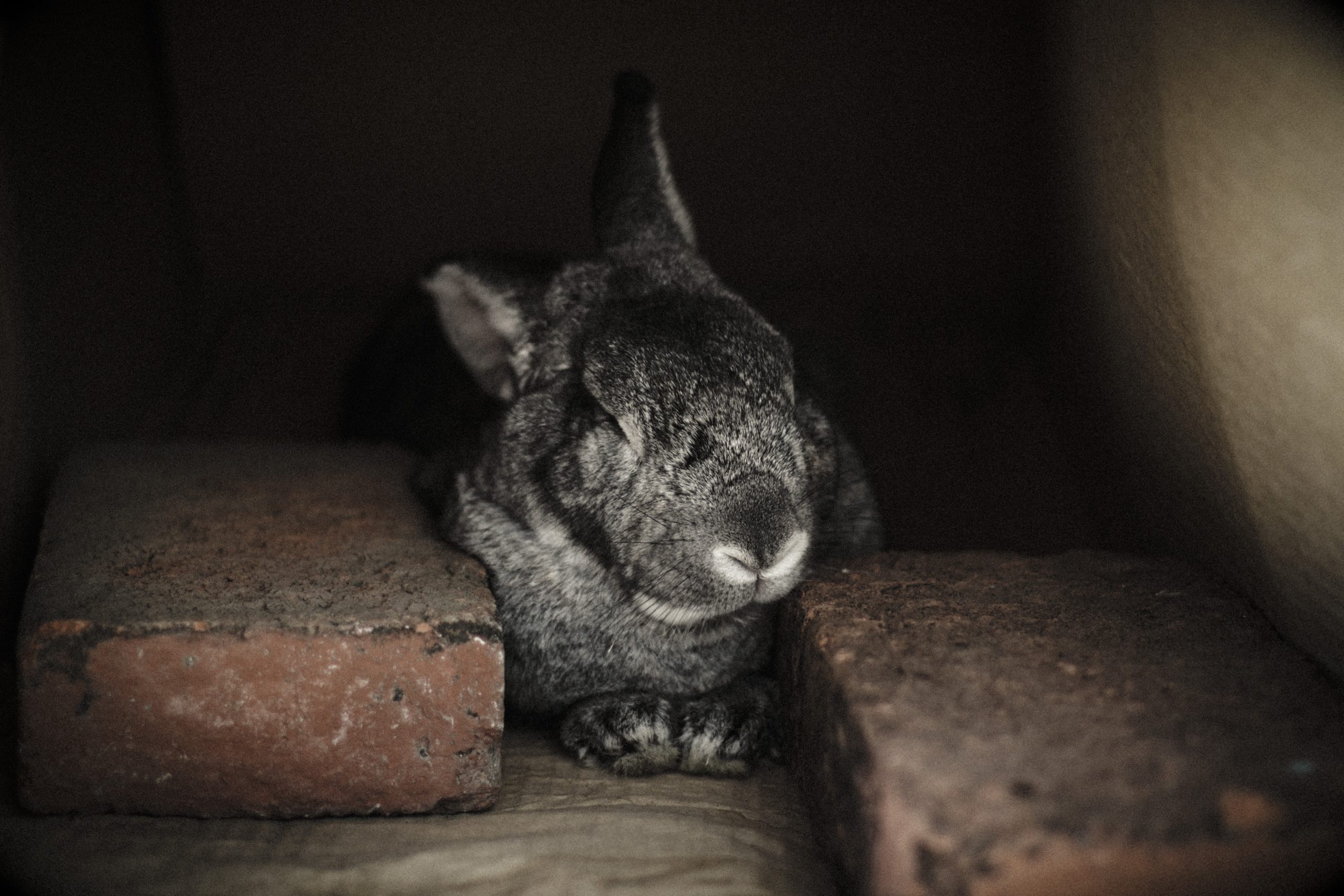
Where Do Rabbits Sleep?
When kept as house pets, rabbits tend to sleep just about anywhere they please! Found in the wild, rabbits will tend to congregate in dug-out shelters known as burrows, where they are better protected from predators.
If you’d like to give your rabbit a safe and comfortable place to sleep in your home, try to make it more like a burrow: Somewhat dark, slightly tucked away, and with plenty of soft bedding. This will encourage them to regularly go to bed at the same hour, and keep a healthy sleep schedule.
How Much Do Rabbits Sleep?
A National Geographic study from their July 2011 issue titled “40 Winks?” estimated that rabbits need around 8.4 hours of sleep per day. Other studies estimate their average sleep duration at over 11 hours. With this number being so similar to humans, it’s easy to think that you could go to bed and wake up around the same time together; however, you’ll find that rabbits have a much different sleep schedule than humans, as detailed in the next section.
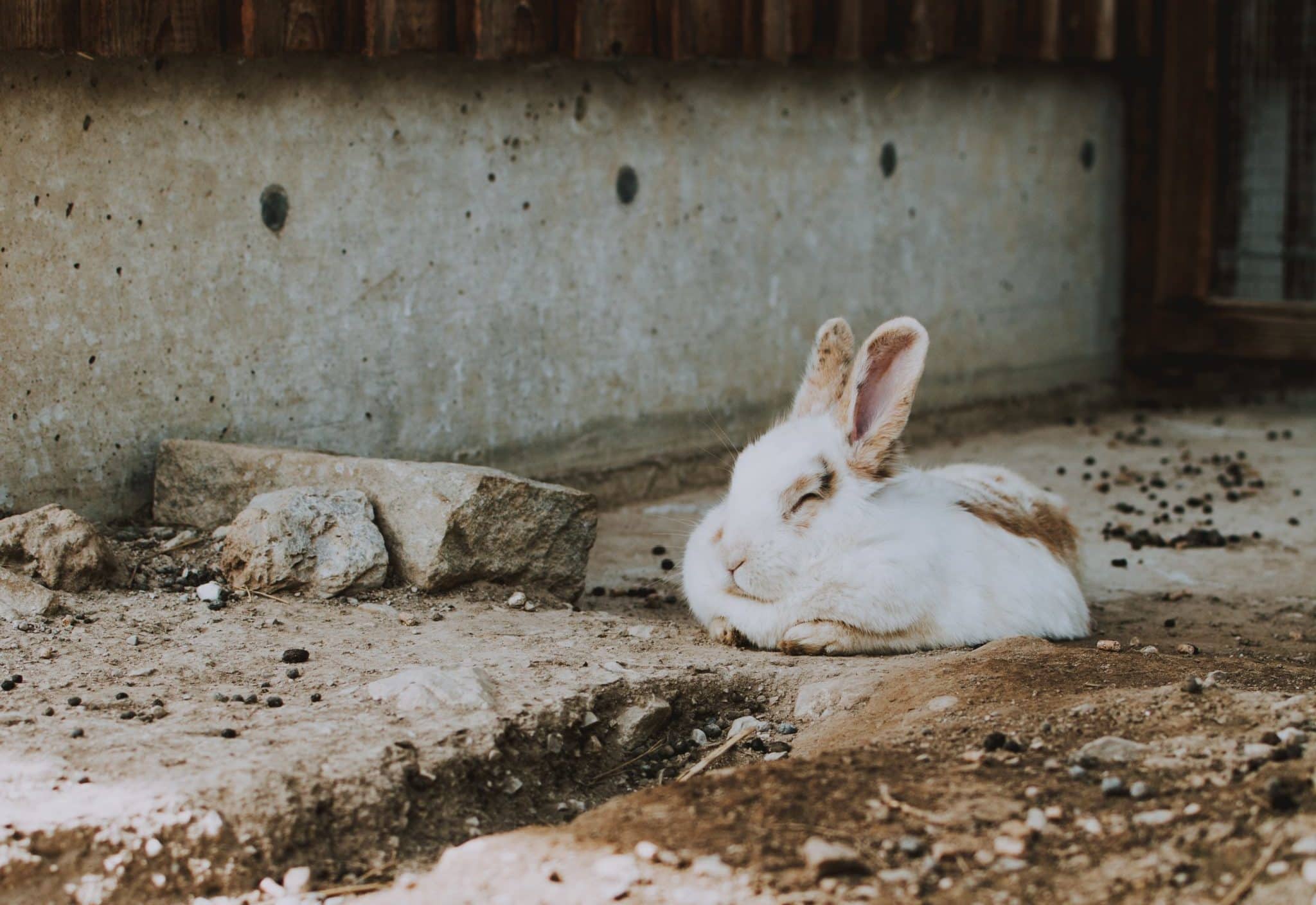
When Do Rabbits Sleep?
As opposed to nocturnal animals (such as owls) and diurnal animals (such as humans), rabbits are crepuscular. This means that rabbits are often most active around dawn and twilight, and get their sleep in two blocks of time: From late morning until early evening, and also in the middle of the night.
This odd sleep cycle may be an evolutionary adaptation to the rabbit’s status as a prey animal. Though many predators are also crepuscular, rabbits are likely also crepuscular because it does make them safer from most birds of prey. While owls are active at night, they rarely hunt during the day. Likewise, hawks, eagles, and other birds of prey are active during the day but not at night. Therefore, being crepuscular might be beneficial for rabbits. It would also allow them to hide in their burrows during the warmer hours of day and the colder hours of the night. Even though rabbits have been domesticated for centuries, this protective mechanism is still found in every breed.
Conclusion
The way a rabbit sleeps will depend heavily on how comfortable it is in the environment it’s sleeping in. If your rabbit is lying on their side to sleep, their nose isn’t twitching, and their ears are laid back, you can be pretty sure that the rabbit is happy, content, and safe in the home that you’ve provided for them, and you can’t ask for much more than that. Rabbits are always on the alert, and a comfortable sleeping rabbit in your home means you’re doing everything right.
Featured Image Credit: gigzsantoz, Shutterstock










